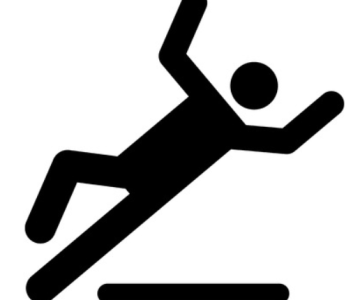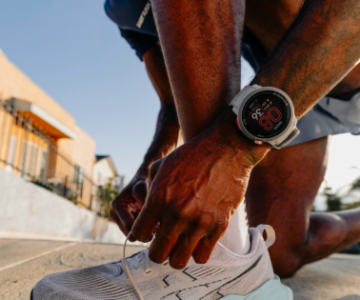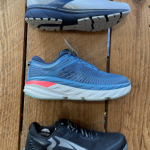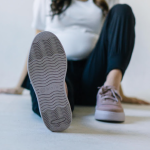When it comes to running marathons, choosing the right shoes is crucial. As someone who’s completed over 50 marathons and a dozen ultramarathons, I’ve learned firsthand how vital it is to pick the right footwear. After all, you could be spending between three and seven hours in your shoes, so making the wrong choice can not only derail your race goals but also turn your marathon into a painful and miserable experience.
In this guide, I’ll share everything you need to know about selecting the perfect running shoes for a marathon based on my experience and knowledge.
Key Considerations When Choosing Marathon Running Shoes
The running shoe market has become increasingly complex, with new brands and models entering the scene every year. There’s no one-size-fits-all solution when it comes to marathon running shoes because, just like our running styles, every runner’s feet are unique. Here’s a breakdown of what to consider when selecting your ideal marathon shoes.
1. Are There Specific Marathon Running Shoe Brands?
Different brands market their shoes in unique ways, and while some may promise greater performance, it’s important to remain open-minded. Sometimes, the brand that seems to dominate the marathon scene might not be the best option for you. Over time, I’ve found that trying various brands and models can lead to discovering the perfect pair, so don’t be afraid to step out of your comfort zone.
2. How Much Should You Spend on Marathon Running Shoes?
The price tag on a pair of shoes doesn’t always guarantee better performance. While higher-priced models often feature advanced technology in the midsole, upper, or plates, you can find excellent shoes for a fraction of the cost. Some of the best marathon shoes are priced in the mid-range and will still offer the comfort and durability needed for race day.
3. How Should Your Running Shoes Fit?
Fit is crucial when selecting marathon shoes. The shoe should fit snugly around your midfoot with no heel slippage, and the toe box should have enough room to allow for toe splay without excessive tightness. Aim for at least a thumb’s width of space between the end of your toes and the shoe’s front. The more comfortable the shoe feels when you first try it on, the better it will feel after hours of running.
Tip: If possible, try on shoes using your race-day socks to ensure an accurate fit.
4. How Much Cushioning Do You Need?
Cushioning is a matter of personal preference, but most marathon runners will benefit from a shoe with good midsole cushioning to protect the feet over long distances. The current trend is toward lightweight, responsive foam that provides cushioning without weighing you down. Your marathon shoes should give you adequate impact protection without feeling bulky or heavy.
5. Understanding Your Pronation
Pronation refers to how your foot rolls inward when it strikes the ground. It’s essential to understand your unique foot mechanics to choose shoes that accommodate your stride. For example, if you tend to overpronate (when your foot rolls too far inward), you might need a support shoe that corrects this motion. Gait analysis can be helpful for identifying your running style, but make sure it’s done by an experienced professional.
6. Are Carbon Plate Shoes Good for Marathons?
Carbon plate shoes, like the Nike Vaporfly, have become extremely popular in the marathon world. These shoes are designed to improve running efficiency by offering a combination of lightweight foam and a stiff carbon plate. While some studies support their ability to improve speed, they aren’t for everyone. These shoes may offer an edge for fast runners, but for those of us running slower paces for several hours, comfort and stability often become more important than efficiency gains.
Shoes like the Saucony Endorphin Pro or ASICS Metaspeed Sky offer better balance between comfort and responsiveness for longer distances. If you’re concerned about comfort and stability over five hours, you might want to opt for a shoe like the HOKA Mach 5 or Puma Velocity Nitro 2, which are easier on the feet without compromising on cushioning.
7. How Much Should Your Running Shoes Weigh?
Weight is another important factor to consider. Some runners believe that lighter shoes enhance performance, but for many marathoners, comfort should be the top priority. A shoe that’s too light can result in insufficient cushioning, which may cause discomfort after hours of running. I’ve learned the hard way that sacrificing cushioning for weight isn’t worth it when you’re running long distances. Aim for shoes that strike a balance between lightness and enough cushioning to protect your feet.
Final Thoughts: The Best Marathon Running Shoes for You
Choosing the right marathon running shoe comes down to understanding your personal needs. From fit to cushioning and support, each runner has unique preferences that should guide their decision. Take time to experiment with different brands and models to find the one that fits you best. Remember, there’s no universal “best” shoe—it’s the one that feels right for your feet and running style.
By keeping these tips in mind and trusting your instincts, you’ll be ready to lace up your shoes and tackle that 26.2-mile challenge with confidence.





